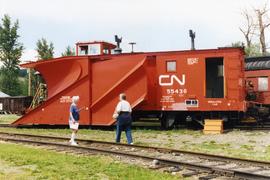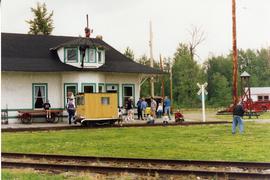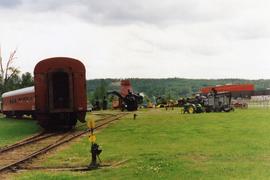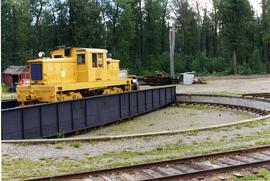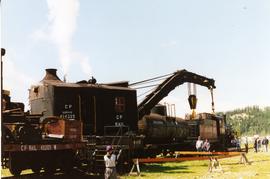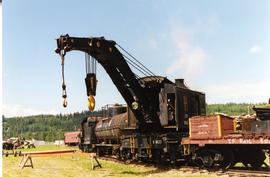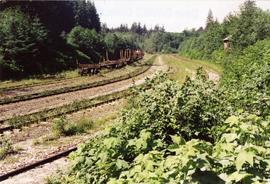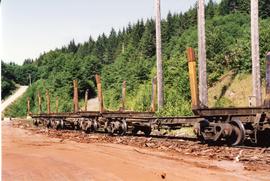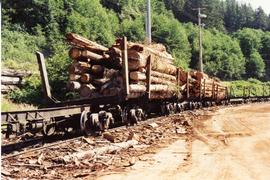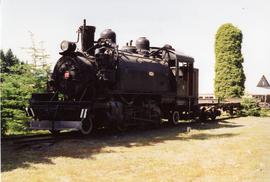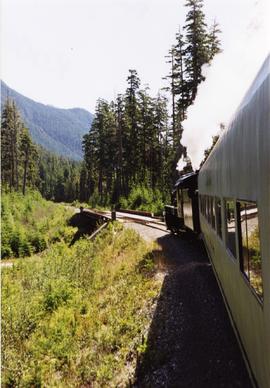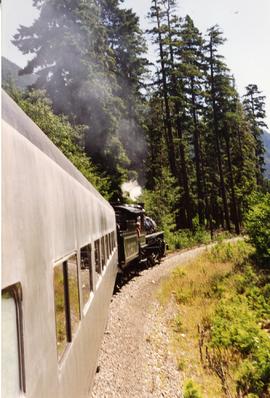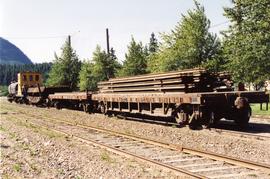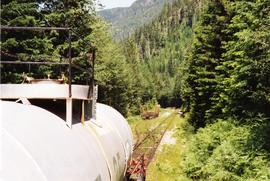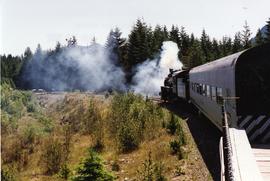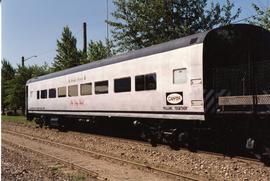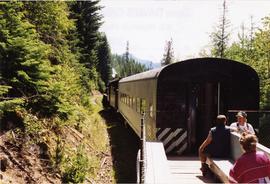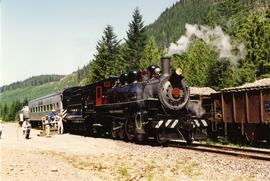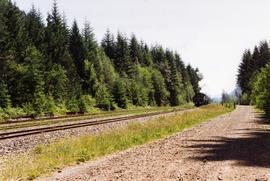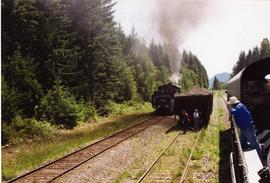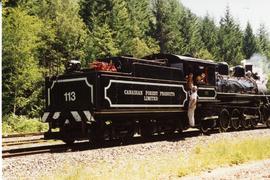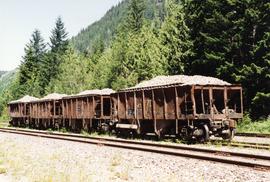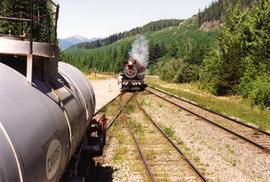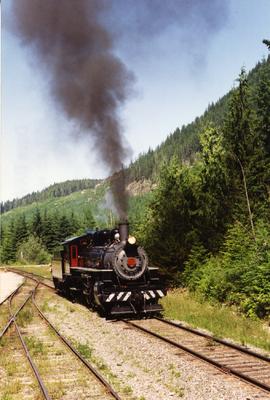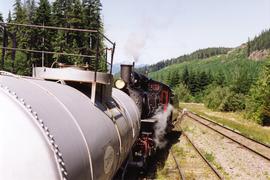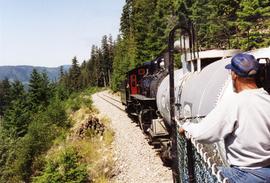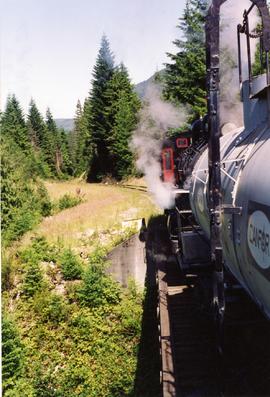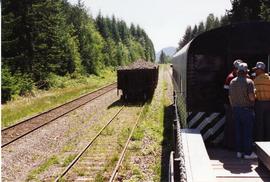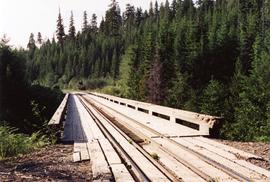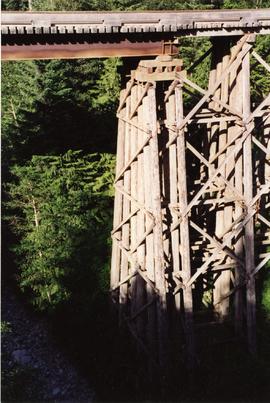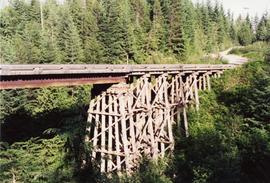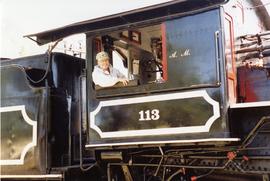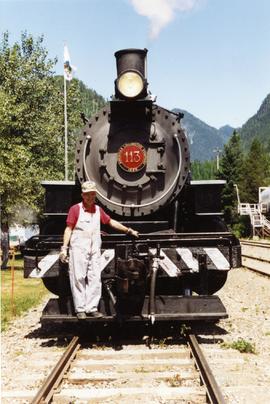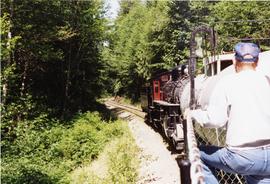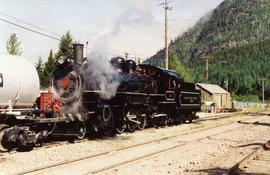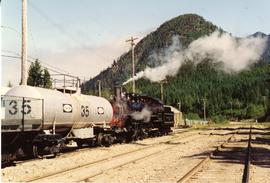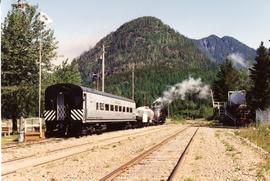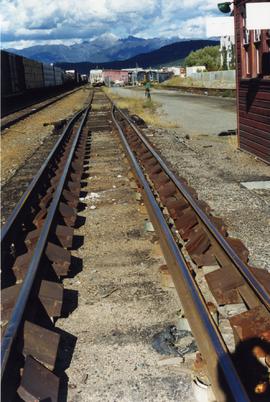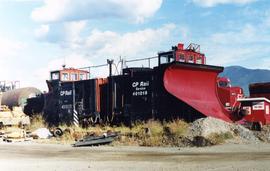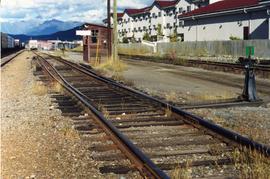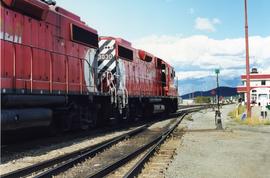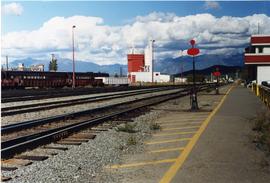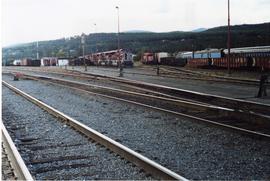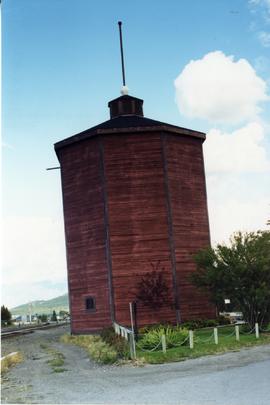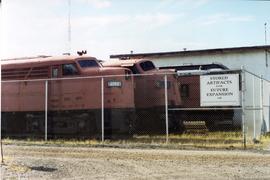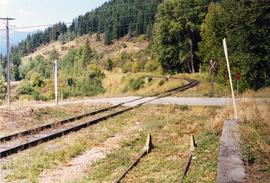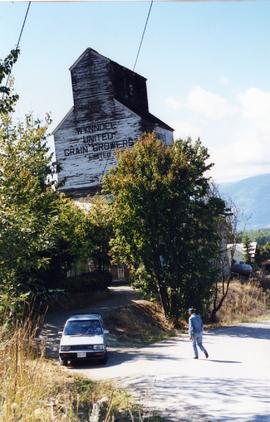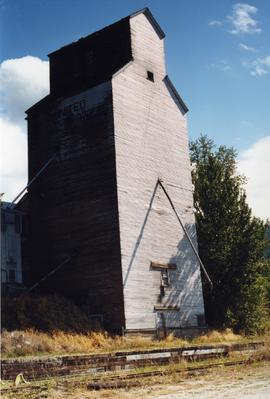Photograph depicts a snow plow at the Prince George Railway Museum.
Photograph taken at the Prince George Railway Museum.
Phoo depicts a train at the Prince George Railway Museum.
Photograph depicts the rear of two locomotive cars at the Prince George Railway Museum.
Photograph depicts a locomotive at the Prince George Railway Museum.
Photograph depicts a crane at the Prince George Railway Museum.
Photograph depicts a crane at the Prince George Railway Museum.
Photograph depicts the Canfor Logging Railway yard in Beaver Cove, located adjacent to a salt water dump. Visible is a railway terminal. There was one running track and 4 storage lines.
Photograph depicts the Canfor Logging Railway yard in Beaver Cove, located adjacent to a salt water dump. Visible is a railway terminal.
Photograph depicts the Canfor Logging Railway yard in Beaver Cove. Visible are log cars waiting to be unloaded.
Photograph depicts a Canfor Logging Railway public passenger train on display at Beaver Cove. It was built in 1923 and had always been a logging liner, first in the USA. It was purchased by Canfor (Englewood) in 1947 and retired around 1960.
Photograph depicts a Canfor Logging Railway public passenger train.
Photograph depicts a Canfor Logging Railway public passenger train.
Photograph depicts replacement rails of the Canfor Logging Railway.
Photograph depicts a Canfor Logging Railway public passenger train.
Photograph depicts a Canfor Logging Railway public passenger train.
Photograph depicts a Canfor Logging Railway public passenger train.
Photograph depicts a Canfor Logging Railway public passenger train.
Photograph depicts a returning Canfor Logging Railway public passenger train.
Photograph depicts the Canfor Logging Railway.
Photograph depicts a Canfor Logging Railway public passenger train passing four loaded ballast cars.
Photograph depicts a Canfor Logging Railway public passenger train.
Photograph depicts ballast cars on the Canfor Logging Railway.
Photograph depicts a Canfor Logging Railway public passenger train.
Photograph depicts a Canfor Logging Railway public passenger train.
Photograph depicts a locomotive being detached from a Canfor Logging Railway public passenger train.
Photograph depicts a Canfor Logging Railway public passenger train.
Photograph depicts a Canfor Logging Railway public passenger train.
Phoo depicts the arrival at a passenger service turn-around.
Photograph depicts a bridge of the Canfor Logging Railway.
Photograph depicts a bridge of the Canfor Logging Railway.
Photograph depicts a bridge of the Canfor Logging Railway.
Photograph depicts a Canfor Logging Railway public passenger train.
Photograph depicts a Canfor Logging Railway public passenger train. Engineer, Dave Davies, is positioned at the throttle.
Photograph depicts a Canfor Logging Railway public passenger train.
Photograph depicts a locomotive built by America Locomotive Co. in 1920 for revenue service in Oregan. Purchased in 1948 for logging work. Canfor purchased it in 1953 and used it till 1966. It was kept servicable until 1976, then was displayed at Woss. In 1988, it was restored in Nimpkish to working order.
Photograph depicts a water tank fitted with a pump for fire fighting.
Photograph depicts a free tourist attraction on the Canfor Logging Railway public passenger train. The trip of 8 and a half miles from the Woss terminus was operated by Canadian Forest Products Ltd., Englewoood Logging Division.
Photograph depicts a close up of weigh track in Cranbrook.
Photograph depicts two parked CPR snow plows.
Photograph depicts a brick roundhouse of 5 or 6 stalls that were used for stores and non-locomotive activities.
Photograph depicts weighing track in Cranbrook. Presumably, locomotives took the track on the left side, while cars used the weigh track on the right side.
Photograph depicts a train departing for the Crow's Nest Pass.
Photograph depicts the east side of the CPR yard in Cranbrook. The depot is visible on the right.
Photograph depicts the view of the CPR yard in Cranbrook, looking west from the depot.
Photograph depicts a water tank that was now part of the Cranbrook Railway Museum.
Photograph depicts locomotive cars waiting for stage two of the Cranbrook Railway Museum's development of artifacts.
Photograph taken looking north, with a spur in the foreground. It was used by ore mixed freight daily. It was believed that at the bottom of the grade was a junction with a GNR branch that ran from the US border south of Creston to Kootenay Lake (built in 1904, then was hardly used, finally ceased in 1910).
Photograph depicts the rear view of an elevator showing its name. Track was on the far side.
Photograph depicts a grain elevator which Wynndel was famous for.
